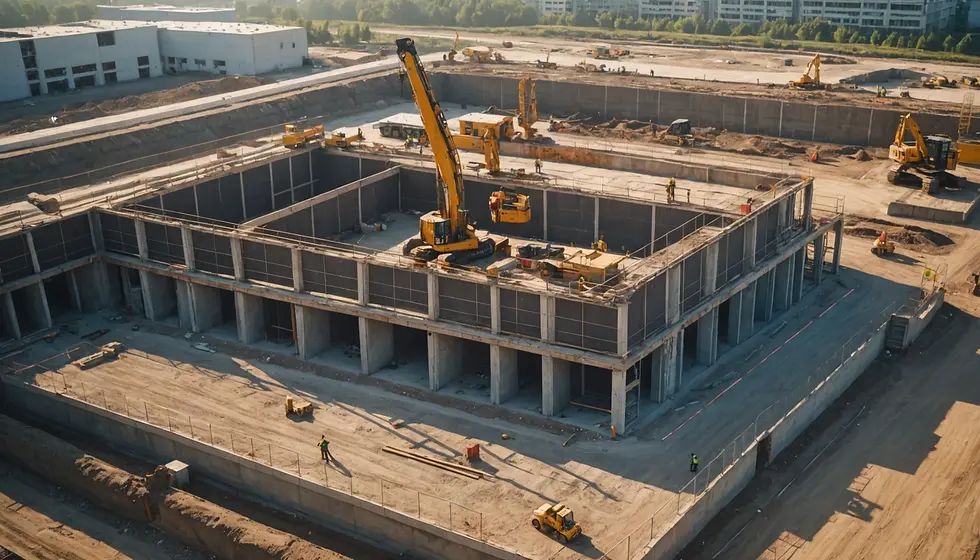Overcoming Financial Challenges of a Real Estate Flip Gone Wrong
- Staff Writer
- Nov 23, 2024
- 5 min read

Real estate flipping sounds appealing: buy low, renovate, and sell high. Many see it as a ticket to easy profits. Yet, the reality is that financial obstacles often loom over the process. A significant number of aspiring flippers discover the hard way that they don't have enough money to finish their projects. This post uncovers the challenges of a real estate flip gone wrong, and offers actionable insights to help you navigate the financial hurdles in your flipping business.
Grasping the Complexity of Real Estate Flips
Flipping real estate means buying properties, renovating them, and selling at a profit. While this sounds simple, the process involves a lot of moving parts. You must calculate the purchase price, renovation costs, market conditions, and future sale potential, and accurately to make a profit. Any errors in even one of these calculations and the project can go off track, resulting in lower profits or project failure.
The financial landscape can shift unexpectedly. For example, a reputed study found that 70% of renovation projects exceed initial budget estimates by 10-30%. Issues like plumbing surprises, roofing repairs, or unanticipated permits and delays can rapidly drain your funds. Many rookie flippers move from excitement to the stress of running out of money mid-project. Running out of money may seem like an isolated problem, but it's the not. Running out of money is actually the result of other issues that have come before it.
Common Causes of Real Estate Flip Gone Wrong
Being aware of typical pitfalls can help flippers avoid financial issues. Here are frequent reasons that lead to cash shortages:
1. Inaccurate Cost Estimates
First-time flippers often underestimate renovation costs. Factors like labor rates, material costs, and project timelines can easily get miscalculated. For instance, if you budgeted $15,000 for kitchen updates but total expenses reach $20,000, you may find yourself scrambling to cover the difference. Multiply these errors over multiple miscalculations and numbers can grow very quickly.
Hidden costs—like plumbing or electrical updates or compliance with building codes—can push budgets over the edge, leading to financial distress.
2. Over-leveraging
Some investors take excessive loans in hopes of achieving high returns. This tactic can backfire if a project runs into unexpected issues. A survey revealed that flippers who over-leverage are 35% more likely to experience financial distress. If costs exceed expectations or the market cools, such heavy debt becomes a serious burden, and being more heavily leveraged leaves little to no room to refinance. Being upside down on the project complicates an already complex process.
3. Market Fluctuations
The real estate market is known for its unpredictability. A flipper may begin a renovation confident that the property will sell for a good price, only to find conditions shift dramatically. According to historical data, real estate prices can dip by up to 20% within a single year during economic downturns. Being aware of these trends can help flippers make better decisions.
Planning for Financial Success
Despite the risks, effective planning can safeguard flippers from financial pitfalls. Consider employing these strategies to better ensure success:
1. Create a Detailed Budget
A detailed budget is the backbone of any flip. List every anticipated expense, such as:
Purchase price
Closing costs
Renovation materials
Labor
Permits
Holding costs
Financial costs
Market risk
Surprise fund (around 10-20% of total renovation costs)
Being thorough in your budgeting helps you spot potential problems and overages early. Establishing a surprise fund creates a cushion for unexpected expenses, preventing cash shortfalls.
2. Build a Financial Buffer
Having a financial buffer is crucial. This could be savings, a line of credit, or forging partnerships with investors.
When unexpected costs come up, this buffer allows you to deal with challenges without derailing your project. Keeping this safety net can be the difference between finishing strong and a flip stopping altogether.
3. Conduct Thorough Research
In the real estate business, knowledge is power. Spend time researching your target neighborhood. Look into:
Recent sales data
Local buyer preferences
Housing trends
Target buyer profile
Market conditions, general and local
By understanding the market better, you can make smarter purchasing and renovation decisions that enhance your return on investment. For example, if your target buyer is a family home buyer, you'll want renovations that enhance that.
Strategies for Overcoming Financial Shortfalls
If you find yourself short on cash when the project is incomplete, there are strategies to help you manage your financial challenges:
1. Renegotiate with Contractors
When costs exceed the budget, communication with your contractors can be key. Discussing your financial limits openly may lead to alternative solutions or flexibility in project scope. Many contractors appreciate transparent dialogue, which can foster collaboration and innovative cost-saving ideas.
2. Explore Alternative Funding Options
If you need additional funds, you might consider the following options:
Personal Loans: Ideal for individuals with good credit who need quick access to finances.
Partnerships: Engage an investor or partner who can share the financial load. A partner like JB Properties can provide the funds and expertise needed to successfully bring the project over the finish line.
Hard Money Loans: These are short-term loans specifically for real estate projects and can offer more flexible conditions than traditional banks. You'll want to be aware that if the project is incomplete or over-leveraged, even hard money lenders will be cautious.
Evaluate which option aligns best with your financial landscape and goals.
3. Prioritize Key Renovations
In times of financial strain, identifying which renovations deliver the most value is crucial. Focus on high-impact areas like:
Kitchen and bathroom remodels
Improving curb appeal
Conducting necessary structural repairs
Concentrating on these changes can enhance a property’s marketability, attracting buyers and speeding up the selling process. This approach can also generate funds to cover other costs. There is a risk to doing this though. Eliminating or changing renovations can alter the valuation and profit figures.
Moving Forward with Confidence
Flipping real estate requires determination and resilience. Numerous flippers face overwhelming financial difficulties, especially when nearing the project finish line. However, understanding the potential pitfalls, establishing a solid plan and backup plans, exploring varied funding sources, and harnessing the power of networking can set you on a path toward prosperity.
Meeting financial challenges does not have to mean defeat. With the right strategies and a commitment to learning, you can emerge stronger and more prepared for future ventures.
While the road to successful flipping is indeed riddled with obstacles—especially financial ones—being proactive and well-prepared can help you weather unexpected turns and mean the difference between failure and success. Whether you're just starting or are a seasoned investor, remember that the journey involves constant learning and adaptation.
If you've run into problems, JB Properties should be your first call. No matter how challenging your situation may be, we can help. Contact us and we can discuss your situation and options.
.png)


Comments